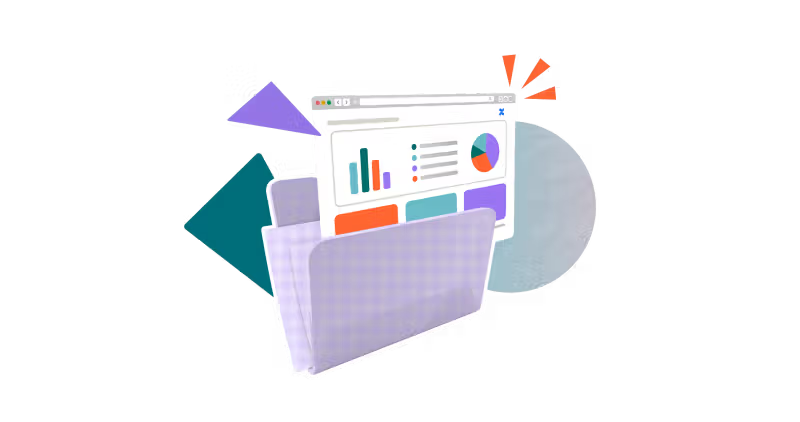What is documentation, and how do businesses create it?
Share on socials
What is documentation, and how do businesses create it?

Jump to Section
Jump to section
What is documentation?
Types of documentation
Documentation vs Knowledge Base
Why is documentation essential?
How to write good documentation
Knowledge is power. Discover why good documentation is so important and how to bring it to your organisation.
What is documentation, and what are the benefits of maintaining effective documentation in your organisation? If you don’t have a firm process, we’re here to convince you it’s time to change that because maintaining documentation can significantly enhance operational efficiencies and provide many other benefits.
If you’re already confident about the content you have and want to try to enhance how you store and distribute it, read our article on how to use Confluence for documentation.
What is documentation?
Documentation refers to keeping records, knowledge, instructions, and guidelines on a subject or process. In organisations, documentation provides a structured way to store and retrieve information of many types, including procedures, specifications, usage instructions, and much more.
Documentation ensures that information is conveyed accurately and consistently. It needs constant revision and review to ensure that it is always correct and complete.
Types of documentation
There are various types of documentation that most businesses should have. What documentation you keep is often industry-driven. For example, in software, you’d be expected to keep installation guides, while in healthcare, documentation includes medical records and treatment plans.
Every business needs documentation to improve efficiency, onboard new employees, comply with regulations, or enhance customer support.

Technical software documentation on a Confluence page
Here are some documentation types you may have:
- Technical: Includes detailed information about a product’s design and is typically used internally by the development/engineering team. It may include source code, troubleshooting guides, and schematics. Some documentation may be suited to technical support or customers experiencing technical issues.
- User: Tends to be external and customer-facing items, including user manuals, quick start guides, FAQs and tutorials.
- Project: This records the planning, execution, and results of a project to ensure transparency and accountability. It also helps teams stay aligned and track progress with project plans, reports, schedules, and documentation of a project’s scope.
- Legal: This contains essential information, such as contracts, agreements, and licences with customers and suppliers.
- Business Process: This contains essential information, such as contracts, agreements, and licences with customers and suppliers.
- Compliance: Crucial for any business wanting to stay on the right side of legislation, this includes details of policies, procedures, and audit reports to show adherence to standards.
- Training: This provides training materials for employees or users, and includes training manuals, videos, and interactive modules for skill development. It’s most often used during onboarding.
How does documentation differ from a knowledge base?
“Documentation” is a broad term that includes all types of recorded information, while a knowledge base generally refers to a specifically structured library of information that is designed for easy access and retrieval.
Documentation offers easy-to-digest information on products, processes or functionality designed to help someone understand how it works or what it does. In contrast, a knowledge base is a library of information designed to solve problems, including information such as FAQs, troubleshooting/how-to guides, demos, glossaries, and user manuals.
Specifically, documentation is just one of the parts of knowledge found in a knowledge base.
Why is documentation essential?
There are many reasons why documentation matters, but here are three:
- It encourages employees/customers to access information independently, which improves self-sufficiency and reduces the strain on support teams.
- It promotes quality control by setting clear standards and procedures, ensuring that teams meet quality benchmarks.
- It helps organisations retain and maintain knowledge long after employees leave.
How to write good documentation in 5 steps
What are the elements of keeping clear and organised documentation? In our opinion, it’s a considered, consistent approach backed by the right technology.
- Understand the gaps in your organisation, e.g. a need to document more processes or procedures to have clarity on what you hope to achieve with your documentation.
- Select the right technology. Documentation tools and platforms are here to help you create and manage your documentation. The right knowledge management systems aren’t just repositories; they ensure that the knowledge you store is collaborative and ever-adapting. Ensure you use technology that is designed to protect you against data loss, with plans for disaster recovery and solid admin controls. Confluence is a fantastic platform for storing documentation.
- Establish documentation standards. You need guidelines and frameworks for teams to work with, from templates to naming conventions and storage rules for the perfect document hierarchy. Lay the foundations for easy access and maintenance. Ensure version control and tracked changes are in place.
- Create and launch. Before you launch, work with colleagues to contribute and review content. Be sure to include senior stakeholders, too.
- Review and improve. How is the documentation being received and used? Do you need to go back and create a more intuitive navigation structure or hierarchy? Encourage feedback from readers to understand how useful your documentation really is, and make improvements frequently.
Ready to make documentation a priority in your business?
Don’t underestimate the importance of documentation. By prioritising documentation best practices, you can help to improve productivity, profit and procedures across your organisation. It’s a great time to get started on your work management journey.
Our apps help you do more in Confluence
Make your Confluence documentation more engaging and user-friendly with our range of apps. Try them all for free today!
Related Content
Read moreWritten by

Content Writer
Elaine has established herself as a respected authority in the HR industry and uses her experience gained as the head of marketing in the employee rewards and recognition software sector to inform her reporting.
Related Content
Read more


